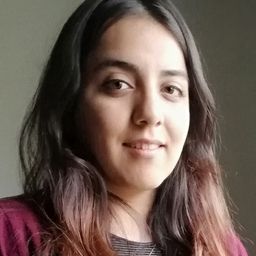Calculus Chapter 1 Limits and Continuity Exercises 1 5
Problem 1
Let $f$ be the function whose graph is shown. On which of the following intervals, if any, is $f$ continuous?
(a) [1,3]
(b) (1,3)
(c) [1,2]
(d) (1,2)
(e) [2,3]
(f) (2,3)
For each interval on which $f$ is not continuous, indicate which conditions for the continuity of $f$ do not hold.
Graph cannot copy
Problem 2
Let $f$ be the function whose graph is shown. On which of the following intervals, if any, is $f$ continuous?
(a) [1,3]
(b) (1,3)
(c) [1,2]
(d) (1,2)
(e) [2,3]
(f) (2,3)
For each interval on which $f$ is not continuous, indicate which conditions for the continuity of $f$ do not hold.
Graph cannot copy
Problem 3
Let $f$ be the function whose graph is shown. On which of the following intervals, if any, is $f$ continuous?
(a) [1,3]
(b) (1,3)
(c) [1,2]
(d) (1,2)
(e) [2,3]
(f) (2,3)
For each interval on which $f$ is not continuous, indicate which conditions for the continuity of $f$ do not hold.
Graph cannot copy
Problem 4
Let $f$ be the function whose graph is shown. On which of the following intervals, if any, is $f$ continuous?
(a) [1,3]
(b) (1,3)
(c) [1,2]
(d) (1,2)
(e) [2,3]
(f) (2,3)
For each interval on which $f$ is not continuous, indicate which conditions for the continuity of $f$ do not hold.
Graph cannot copy
Problem 5
Consider the functions
$$f(x)=\left\{\begin{aligned} 1, & x \neq 4 \\-1, & x=4 \end{aligned} \text { and } g(x)=\left\{\begin{array}{ll}4 x-10, & x \neq 4 \\ -6, & x=4\end{array}\right.\right.$$
In each part, is the given function continuous at $x=4 ?$
(a) $f(x)$
(b) $g(x)$
(c) $-g(x)$
(d) $|f(x)|$
(e) $f(x) g(x)$
(f) $g(f(x))$
(g) $g(x)-6 f(x)$
Problem 6
Consider the functions
$$f(x)=\left\{\begin{array}{ll}
1, & 0 \leq x \\
0, & x<0
\end{array} \text { and } g(x)=\left\{\begin{array}{ll}
0, & 0 \leq x \\
1, & x<0
\end{array}\right.\right.$$
In each part, is the given function continuous at $x=0 ?$
(a) $f(x)$
(b) $g(x)$
(c) $f(-x)$
(d) $|g(x)|$
(e) $f(x) g(x)$
(f) $g(f(x))$
(g) $f(x)+g(x)$
Problem 7
In each part sketch the graph of a function $f$ that satisfies the stated conditions.
(a) $f$ is continuous everywhere except at $x=3,$ at which point it is continuous from the right.
(b) $f$ has a two-sided limit at $x=3,$ but it is not continuous at $x=3$.
(c) $f$ is not continuous at $x=3,$ but if its value at $x=3$ is changed from $f(3)=1$ to $f(3)=0,$ it becomes continuous at $x=3$.
(d) $f$ is continuous on the interval [0,3) and is defined on the closed interval [0,3]$;$ but $f$ is not continuous on the interval [0,3].

Jonathon Brumley
Numerade Educator
Problem 8
The accompanying figure models the concentration $C$ of medication in the bloodstream of a patient over a 48-hour period of time. Discuss the significance of the discontinuities in the graph.
Graph cannot copy

Lucía Guerrero
Numerade Educator
Problem 9
A student parking lot at a university charges $\$ 2.00$ for the first half hour (or any part) and $\$ 1.00$ for each subsequent half hour (or any part) up to a daily maximum of $\$ 10.00$
(a) Sketch a graph of cost as a function of the time parked.
(b) Discuss the significance of the discontinuities in the graph to a student who parks there.

Pawan Yadav
Numerade Educator
Problem 10
In each part determine whether the function is continuous or not, and explain your reasoning.
(a) The Earth's population as a function of time.
(b) Your exact height as a function of time.
(c) The cost of a taxi ride in your city as a function of the distance traveled.
(d) The volume of a melting ice cube as a function of time.

Jonathon Brumley
Numerade Educator
Problem 11
Find values of $x$, if any, at which $f$ is not continuous.
$$f(x)=5 x^{4}-3 x+7$$

Jonathon Brumley
Numerade Educator
Problem 12
Find values of $x$, if any, at which $f$ is not continuous.
$$f(x)=\sqrt[3]{x-8}$$

Jonathon Brumley
Numerade Educator
Problem 13
Find values of $x$, if any, at which $f$ is not continuous.
$$f(x)=\frac{x+2}{x^{2}+4}$$

Jonathon Brumley
Numerade Educator
Problem 14
Find values of $x$, if any, at which $f$ is not continuous.
$$f(x)=\frac{x+2}{x^{2}-4}$$

Jonathon Brumley
Numerade Educator
Problem 15
Find values of $x$, if any, at which $f$ is not continuous.
$$f(x)=\frac{x}{2 x^{2}+x}$$

Jonathon Brumley
Numerade Educator
Problem 16
Find values of $x$, if any, at which $f$ is not continuous.
$$f(x)=\frac{2 x+1}{4 x^{2}+4 x+5}$$

Jonathon Brumley
Numerade Educator
Problem 17
Find values of $x$, if any, at which $f$ is not continuous.
$$f(x)=\frac{3}{x}+\frac{x-1}{x^{2}-1}$$

Jonathon Brumley
Numerade Educator
Problem 18
Find values of $x$, if any, at which $f$ is not continuous.
$$f(x)=\frac{5}{x}+\frac{2 x}{x+4}$$

Jonathon Brumley
Numerade Educator
Problem 19
Find values of $x$, if any, at which $f$ is not continuous.
$$f(x)=\frac{x^{2}+6 x+9}{|x|+3}$$

Jonathon Brumley
Numerade Educator
Problem 20
Find values of $x$, if any, at which $f$ is not continuous.
$$f(x)=\left|4-\frac{8}{x^{4}+x}\right|$$

Jonathon Brumley
Numerade Educator
Problem 21
Find values of $x$, if any, at which $f$ is not continuous.
$$f(x)=\left\{\begin{array}{ll}2 x+3, & x \leq 4 \\ 7+\frac{16}{x}, & x>4\end{array}\right.$$
Problem 22
Find values of $x$, if any, at which $f$ is not continuous.
$$f(x)=\left\{\begin{array}{ll}\frac{3}{x-1}, & x \neq 1 \\ 3, & x=1\end{array}\right.$$
Problem 23
Determine whether the statement is true or false. Explain your answer.
If $f(x)$ is continuous at $x=c,$ then so is $|f(x)|$.
Problem 24
Determine whether the statement is true or false. Explain your answer.
If $|f(x)|$ is continuous at $x=c,$ then so is $f(x)$.
Problem 25
Determine whether the statement is true or false. Explain your answer.
If $f$ and $g$ are discontinuous at $x=c,$ then so is $f+g$.

Jonathon Brumley
Numerade Educator
Problem 26
Determine whether the statement is true or false. Explain your answer.
If $f$ and $g$ are discontinuous at $x=c,$ then so is $f g .$

Jonathon Brumley
Numerade Educator
Problem 27
Determine whether the statement is true or false. Explain your answer.
If $\sqrt{f(x)}$ is continuous at $x=c,$ then so is $f(x)$.
Problem 28
Determine whether the statement is true or false. Explain your answer.
If $f(x)$ is continuous at $x=c,$ then so is $\sqrt{f(x)}$.
Problem 29
Find a value of the constant $k$, if possible, that will make the function continuous everywhere.
(a) $f(x)=\left\{\begin{array}{ll}7 x-2, & x \leq 1 \\ k x^{2}, & x>1\end{array}\right.$
(b) $f(x)=\left\{\begin{array}{ll}k x^{2}, & x \leq 2 \\ 2 x+k, & x>2\end{array}\right.$
Problem 30
Find a value of the constant $k$, if possible, that will make the function continuous everywhere.
(a) $f(x)=\left\{\begin{array}{ll}9-x^{2}, & x \geq-3 \\ k / x^{2}, & x<-3\end{array}\right.$
(b) $f(x)=\left\{\begin{array}{ll}9-x^{2}, & x \geq 0 \\ k / x^{2}, & x<0\end{array}\right.$
Problem 31
Find values of the constants $k$ and $m,$ if possible, that will make the function $f$ continuous everywhere.
$$f(x)=\left\{\begin{array}{lr}
x^{2}+5, & x>2 \\
m(x+1)+k, & -1<x \leq 2 \\
2 x^{3}+x+7, & x \leq-1
\end{array}\right.$$
Problem 32
On which of the following intervals is
$$f(x)=\frac{1}{\sqrt{x-2}}$$
continuous?
(a) $[2,+\infty)$
(b) $(-\infty,+\infty)$
(c) $(2,+\infty)$
(d) [1,2)
Problem 33
A function $f$ is said to have a removable discontinuity at $x=c$ if $\lim _{x \rightarrow c} f(x)$ exists but $f$ is not continuous at $x=c$ either because $f$ is not defined at $c$ or because the definition for $f(c)$ differs from the value of the limit. This terminology will be needed in these exercises.
(a) Sketch the graph of a function with a removable discontinuity at $x=c$ for which $f(c)$ is undefined.
(b) Sketch the graph of a function with a removable discontinuity at $x=c$ for which $f(c)$ is defined.

Jonathon Brumley
Numerade Educator
Problem 34
A function $f$ is said to have a removable discontinuity at $x=c$ if $\lim _{x \rightarrow c} f(x)$ exists but $f$ is not continuous at $x=c$ either because $f$ is not defined at $c$ or because the definition for $f(c)$ differs from the value of the limit. This terminology will be needed in these exercises.
(a) The terminology removable discontinuity is appropriate because a removable discontinuity of a function $f$ at $x=c$ can be "removed" by redefining the value of $f$ appropriately at $x=c .$ What value for $f(c)$ removes the discontinuity?
(b) Show that the following functions have removable discontinuities at $x=1,$ and sketch their graphs. $$f(x)=\frac{x^{2}-1}{x-1} \text { and } g(x)=\left\{\begin{array}{ll}1, & x>1 \\ 0, & x=1 \\ 1, & x<1\end{array}\right.$$
(c) What values should be assigned to $f(1)$ and $g(1)$ to remove the discontinuities?
Problem 35
Find the values of $x$ (if any) at which $f$ is not continuous, and determine whether each such value is a removable discontinuity.
(a) $f(x)=\frac{|x|}{x}$
(b) $f(x)=\frac{x^{2}+3 x}{x+3}$
(c) $f(x)=\frac{x-2}{|x|-2}$
Problem 36
Find the values of $x$ (if any) at which $f$ is not continuous, and determine whether each such value is a removable discontinuity.
(a) $f(x)=\frac{x^{2}-4}{x^{3}-8}$
(b) $f(x)=\left\{\begin{array}{ll}2 x-3, & x \leq 2 \\ x^{2}, & x>2\end{array}\right.$
(c) $f(x)=\left\{\begin{array}{ll}3 x^{2}+5, & x \neq 1 \\ 6, & x=1\end{array}\right.$
Problem 37
(a) Use a graphing utility to generate the graph of the function $f(x)=(x+3) /\left(2 x^{2}+5 x-3\right),$ and then use the graph to make a conjecture about the number and locations of all discontinuities.
(b) Check your conjecture by factoring the denominator.

Norman Atentar
Numerade Educator
Problem 38
(a) Use a graphing utility to generate the graph of the function $f(x)=x /\left(x^{3}-x+2\right),$ and then use the graph to make a conjecture about the number and locations of all discontinuities.
(b) Use the Intermediate-Value Theorem to approximate the locations of all discontinuities to two decimal places.

Norman Atentar
Numerade Educator
Problem 39
Prove that $f(x)=x^{3 / 5}$ is continuous everywhere, carefully justifying each step.

Norman Atentar
Numerade Educator
Problem 40
Prove that $f(x)=1 / \sqrt{x^{4}+7 x^{2}+1}$ is continuous everywhere, carefully justifying each step.

Norman Atentar
Numerade Educator
Problem 41
Prove:
(a) part ( $a$ ) of Theorem 1.5 .3
(b) part ( $b$ ) of Theorem 1.5 .3
(c) part (c) of Theorem 1.5 .3

Norman Atentar
Numerade Educator
Problem 42
Prove part ( $b$ ) of Theorem 1.5 .4.

Norman Atentar
Numerade Educator
Problem 43
(a) Use Theorem 1.5 .5 to prove that if $f$ is continuous at $x=c,$ then $\lim _{h \rightarrow 0} f(c+h)=f(c)$.
(b) Prove that if $\lim _{h \rightarrow 0} f(c+h)=f(c),$ then $f$ is continuous at $x=c .$ [Hint: What does this limit tell you about the continuity of $g(h)=f(c+h) ?$]
(c) Conclude from parts (a) and (b) that $f$ is continuous at $x=c$ if and only if $\lim _{h \rightarrow 0} f(c+h)=f(c)$.
Problem 44
Prove: If $f$ and $g$ are continuous on $[a, b],$ and $f(a)>g(a)$ $f(b)<g(b),$ then there is at least one solution of the equation $f(x)=g(x) \text { in }(a, b) . \text { [Hint: Consider } f(x)-g(x) .]$

Carson Merrill
Numerade Educator
Problem 45
Give an example of a function $f$ that is defined on a closed interval, and whose values at the endpoints have opposite signs, but for which the equation $f(x)=0$ has no solution in the interval.

Jonathon Brumley
Numerade Educator
Problem 46
Let $f$ be the function whose graph is shown in Exercise $2 .$ For each interval, determine (i) whether the hypothesis of the Intermediate-Value Theorem is satisfied, and (ii) whether the conclusion of the IntermediateValue Theorem is satisfied.
(a) [1,2]
(b) [2,3]
(c) [1,3]
Problem 47
Show that the equation $x^{3}+x^{2}-2 x=1$ has at least one solution in the interval [-1,1].

Jonathon Brumley
Numerade Educator
Problem 48
Prove: If $p(x)$ is a polynomial of odd degree, then the equation $p(x)=0$ has at least one real solution.

Jonathon Brumley
Numerade Educator
Problem 49
The accompanying figure on the next page shows the graph of the equation $y=x^{4}+x-1 .$ Use the method of Example 6 to approximate the $x$ -intercepts with an error of at most 0.05.
Figure cannot copy
Problem 50
The accompanying figure shows the graph of the equation $y=5-x-x^{4} .$ Use the method of Example 6 to approximate the roots of the equation $5-x-x^{4}=0$ to two decimal-place accuracy.
Figure cannot copy

Jonathon Brumley
Numerade Educator
Problem 51
Use the fact that $\sqrt{5}$ is a solution of $x^{2}-5=0$ to approximate $\sqrt{5}$ with an error of at most 0.005.

Norman Atentar
Numerade Educator
Problem 52
A sprinter, who is timed with a stopwatch, runs a hundred yard dash in 10 s. The stopwatch is reset to $0,$ and the sprinter is timed jogging back to the starting block. Show that there is at least one point on the track at which the reading on the stopwatch during the sprint is the same as the reading during the return jog. [Hint: Use the result in Exercise 44.1.]
Problem 53
Prove that there exist points on opposite sides of the equator that are at the same temperature. [Hint: Consider the accompanying figure, which shows a view of the equator from a point above the North Pole. Assume that the temperature $T(\theta)$ is a continuous function of the angle $\theta,$ and consider the function $f(\theta)=T(\theta+\pi)-T(\theta) .]$
Figure cannot copy
Problem 54
Let $R$ denote an elliptical region in the $x y$ -plane, and define $f(z)$ to be the area within $R$ that is on, or to the left of, the vertical line $x=z$. Prove that $f$ is a continuous function of $z$. [Hint: Assume the ellipse is between the horizontal lines $y=a$ and $y=b, a<b .$ Argue that $\left.\left|f\left(z_{1}\right)-f\left(z_{2}\right)\right| \leq(b-a) \cdot\left|z_{1}-z_{2}\right| \cdot\right]$
Problem 55
Let $R$ denote an elliptical region in the plane. For any line
L. prove there is a line perpendicular to $L$ that divides $R$ in half by area. [Hint: Introduce coordinates so that $L$ is the $x$ -axis. Use the result in Exercise 54 and the Intermediate Value Theorem.]
Problem 56
Suppose that $f$ is continuous on the interval [0,1] and that $0 \leq f(x) \leq 1$ for all $x$ in this interval.
(a) Sketch the graph of $y=x$ together with a possible graph for $f$ over the interval [0,1].
(b) Use the Intermediate-Value Theorem to help prove that there is at least one number $c$ in the interval [0,1] such that $f(c)=c$.

Jonathon Brumley
Numerade Educator
Problem 57
Let $f(x)=x^{6}+3 x+5, x \geq 0 .$ Show that $f$ is an invertible function and that $f^{-1}$ is continuous on $[5,+\infty)$.
Problem 58
Suppose that $f$ is an invertible function, $f(0)=0, f$ is continuous at $0,$ and $\lim _{x \rightarrow 0} f(x) / x$ exists. Given that $L=\lim _{x \rightarrow 0} f(x) / x,$ show
$$\lim _{x \rightarrow 0} \frac{x}{f^{-1}(x)}=L$$
[Hint: Apply Theorem 1.5 .5 to the composition hog, where
$$h(x)=\left\{\begin{array}{ll}
f(x) / x, & x \neq 0 \\
L, & x=0
\end{array}\right.$$
and $\left.g(x)=f^{-1}(x)\right].$
Problem 59
It is often assumed that changing physical quantities, such as the height of a falling object or the weight of a melting snowball, are continuous functions of time. Use specific examples to discuss the merits of this assumption.
Problem 60
The Intermediate-Value Theorem is an example of what is known as an "existence theorem." In your own words, describe how to recognize an existence theorem, and discuss some of the ways in which an existence theorem can be useful.
Source: https://www.numerade.com/books/chapter/limits-and-continuity-9/?section=14536
Post a Comment for "Calculus Chapter 1 Limits and Continuity Exercises 1 5"